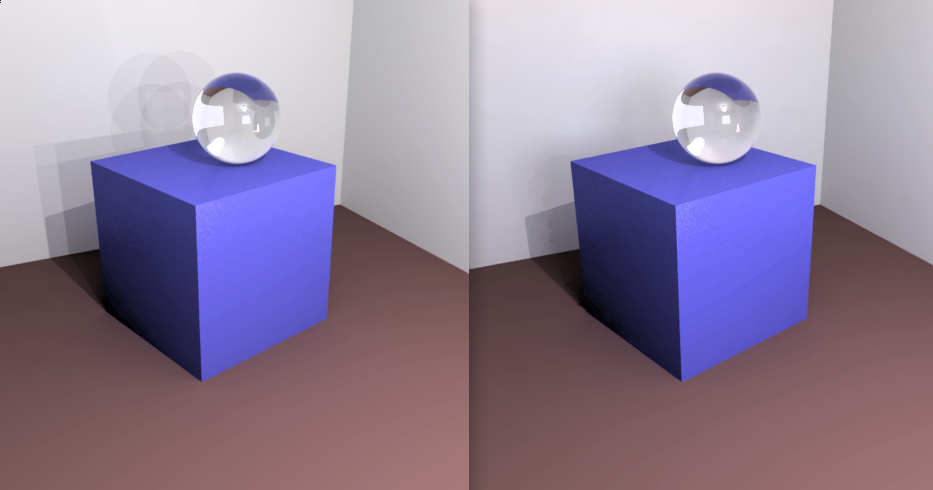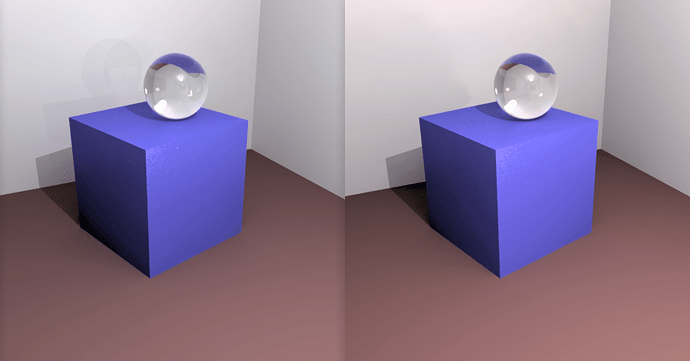In chapter 1 of Rendering with Radiance, it walks through a scene with a window. Initially the window is defined only using a glass material. The book explains that the window does not seem to illuminate the room, and recommends changing the window into an illum affected by winxmit.cal and skyfunc.
Why is it necessary to change it from a glass material to an illum? Why can’t we just leave it as a glass material, and let the light rays pass through the glass and go into the room?
To test this, I re-rendered it with QUALITY=HIGH and left the window as glass, instead of an illum. You can see the results below. Image on the left uses an illum (srcwindow.rad), and image on the right is plain glass (window.rad). Although the images are clearly different, on the right I do see a faint, blurry shadow that is potentially caused by light passing through the glass window. But if light is already passing through the window naturally, why do we need to change the window to an illum material?
The tutorial then modifies the exterior to have a ground plane and a mirrored building instead of an infinite ground and sky. It suggests that treating the window as glass, and using mkillum on the glass should be visually equivalent, except that mkillum is more efficient (it additionally suggests that if QUALITY=HIGH, then interreflection calculation will be enabled and the solar patch will also be considered). So I rendered both cases with QUALITY=HIGH, but as you can see below, the results are not the same. Left is with mkillum, and right is with regular glass.
Why is there a difference, and which is more accurate?
As a bonus question, the book suggests passing -av 18 18 18 to mkillum. Why is 18 chosen? The results of gensky say that the ground ambient level is 14.6.
Apologies for the beginner questions, and if I have missed something obvious 


